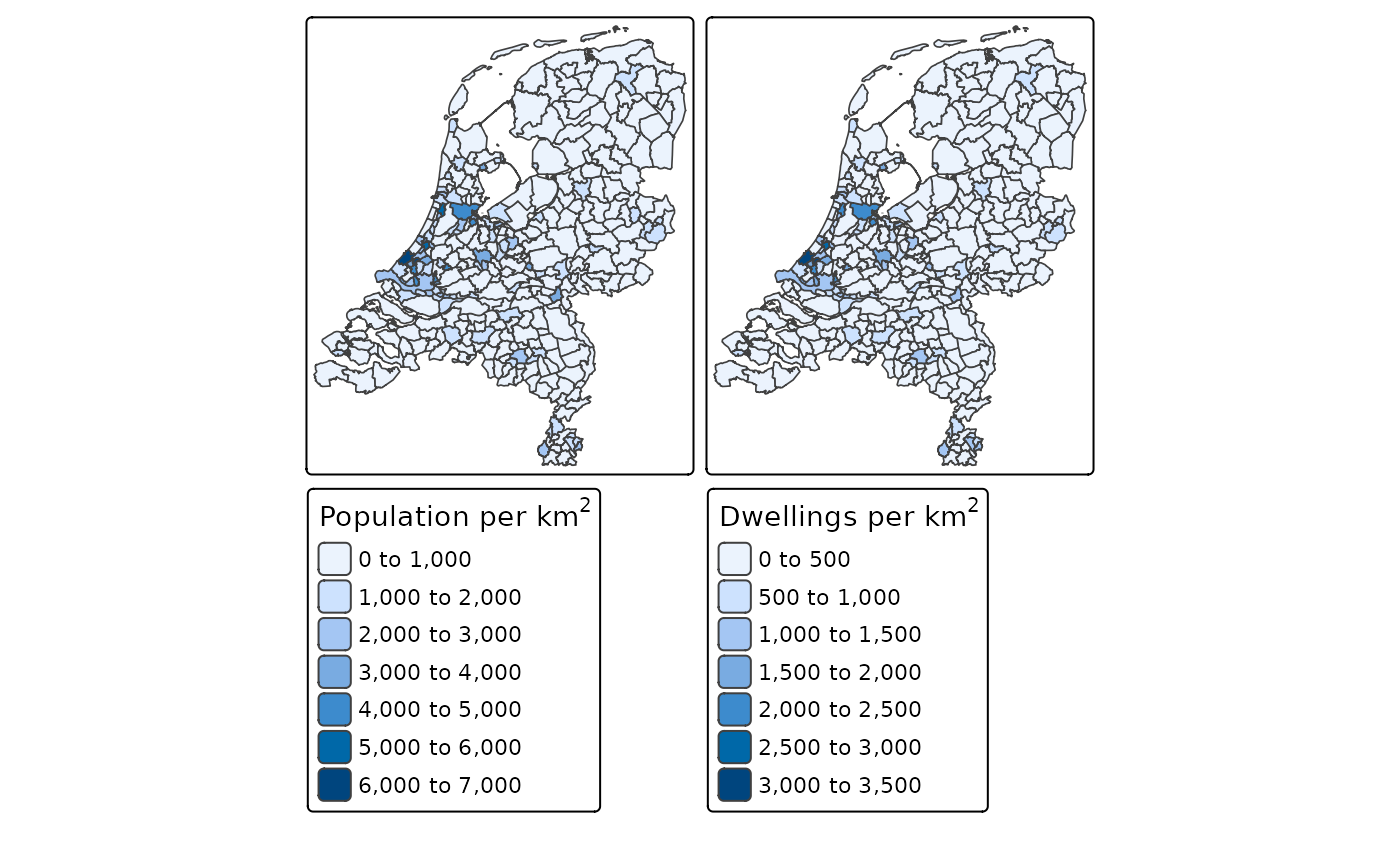Transpose quantitative variables to densitiy variables, which are often needed for choroplets. For example, the colors of a population density map should correspond population density counts rather than absolute population numbers.
Arguments
- shp
a shape object, i.e., an
sfobject.- var
name(s) of a qualtity variable name contained in the
shpdata- target
the target unit, see
approx_areas. Density values are calculated invar/target^2.- total.area
total area size of
shpin number of target units (defined byunit),approx_areas.- suffix
character that is appended to the variable names. The resulting names are used as column names of the returned data.frame. By default,
_sq_<target>, where target corresponds to the target unit, e.g._sq_km- drop
boolean that determines whether an one-column data-frame should be returned as a vector
Examples
if (require(tmap) && packageVersion("tmap") >= "3.99") {
data(NLD_muni)
NLD_muni_pop_per_km2 <- calc_densities(NLD_muni,
target = "km km", var = c("population", "dwelling_total"))
NLD_muni <- sf::st_sf(data.frame(NLD_muni, NLD_muni_pop_per_km2))
tm_shape(NLD_muni) +
tm_polygons(
fill = c("population_km.2", "dwelling_total_km.2"),
fill.legend =
list(
tm_legend(expression("Population per " * km^2)),
tm_legend(expression("Dwellings per " * km^2)))) +
tm_facets(free.scales = TRUE) +
tm_layout(panel.show = FALSE)
}
#> tm_facets(): the argument free.scales is deprecated. Specify this via the layer functions (e.g. fill.free in tm_polygons)
